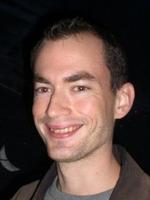KDE Software for Scientists
Speaker: Stuart Jarvis
Scientists offer a significant market for free software. They have experience of using different operating systems and applications from many different vendors. They are open to trying new things and they are used to the concept of collaborative development. Many also have the skills to extend applications via scripted plugins and large, international teams benefit from software that uses open standards.
KDE has some strong science applications. Kile offers a user friendly LaTeX editor that wows users struggling on other platforms. Marble provides good quality mapping information. Cantor promises to provide a usable interface to powerful maths backends. LabPlot provided advanced data plotting in KDE 3 and a Platform 4 version is in development following collaboration with the (Qt) SciDAVis team.
However, these applications are largely presented in isolation and so users of one do not necessarily become aware of others and perhaps the same is true of developers. Kile and LabPlot are not part of KDE-Edu, Marble and Cantor are. Even Kile and KBibTeX are not strongly linked. KDE-Edu encompasses a wide range of applications, from word games for pre-school children through language learning tools to a few applications of interest to science graduates. KDE provides an integrated set of productivity applications in KOffice and a PIM suite in Kontact and its components. No such integration exists for a scientific audience.
It appears, from reading Planet KDE, that many KDE contributors and users are also scientists. We should discuss the current software, identify the holes and share knowledge of other free applications that can be useful or which could benefit from a KDE frontend. We can also consider setting up a mailing list, dedicated area in the KDE Forums or a webpage to present our science applications together and build our community of users and contributors.
Stuart Jarvis
 Stuart is a scientist based in the UK. He first experienced Linux and KDE software in 2003 while at university, was hooked and has used KDE for his home desktop software ever since. Late in 2008, he wrote my first article for KDE Dot News and since then has been increasingly involved in Promotion Team activities, attending the Booth, Web and Promo sprint in November 2009. The largest part of his contribution in terms of time is probably editing articles on the Dot, but he has assisted with the rebranding effort and promotion of the 4.4 release of the Software Compilation. Within the past six months he has written KDE- related articles for Linux Journal, the Google Open Source Blog and, of course, the Dot. He has a particular interest in the use of KDE software by scientists and on Windows.
Stuart is a scientist based in the UK. He first experienced Linux and KDE software in 2003 while at university, was hooked and has used KDE for his home desktop software ever since. Late in 2008, he wrote my first article for KDE Dot News and since then has been increasingly involved in Promotion Team activities, attending the Booth, Web and Promo sprint in November 2009. The largest part of his contribution in terms of time is probably editing articles on the Dot, but he has assisted with the rebranding effort and promotion of the 4.4 release of the Software Compilation. Within the past six months he has written KDE- related articles for Linux Journal, the Google Open Source Blog and, of course, the Dot. He has a particular interest in the use of KDE software by scientists and on Windows.